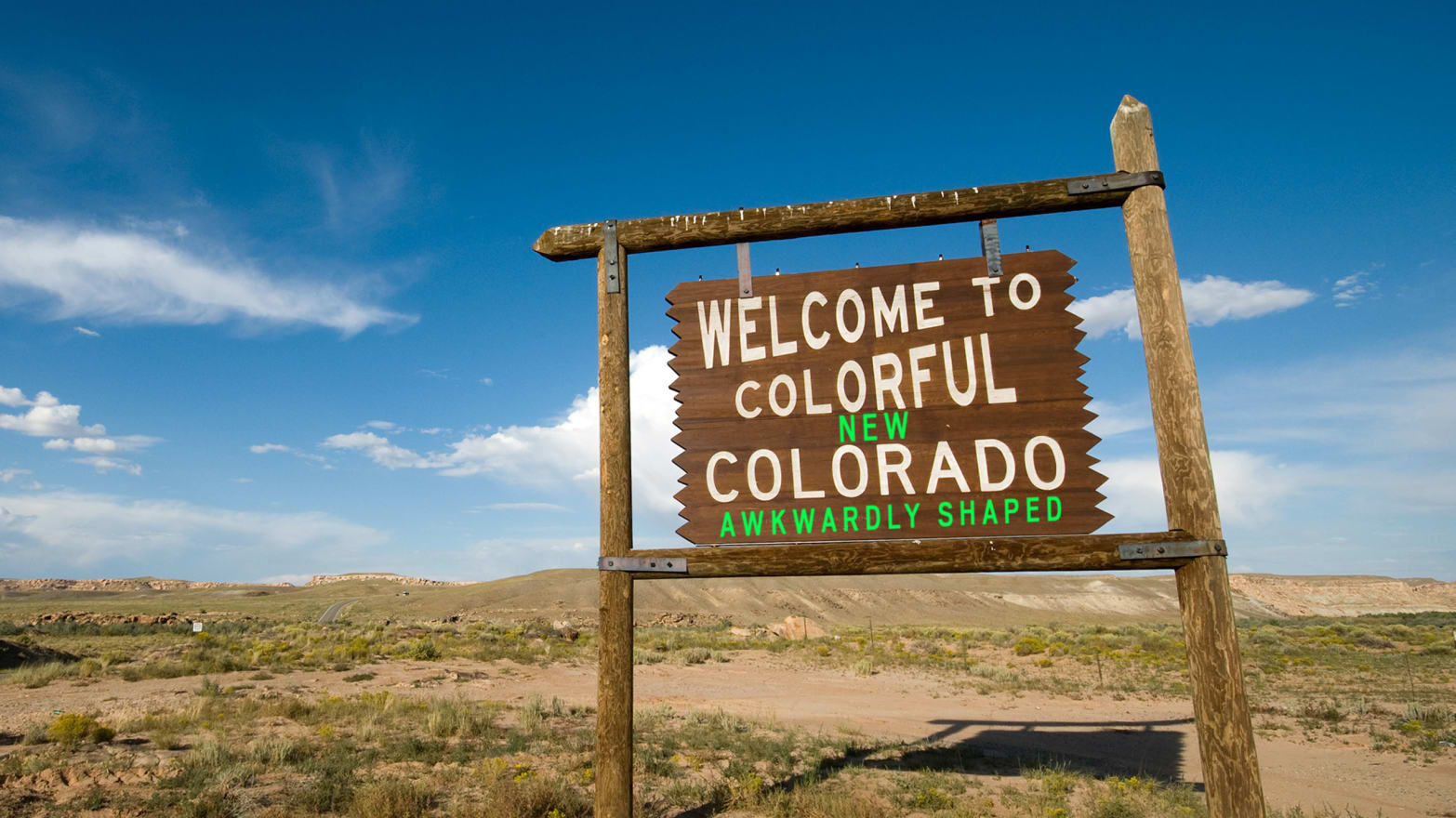You can have your Chris Christies and Bill de Blasios and Terry McAuliffes. Oh, those are all interesting races, and they all tell us something or other about the current mood. But Tuesday night, I’m going to be watching Colorado. Individual pols come and go, but what seems to be happening out in the Rocky Mountain West is the start of a new and lamentable trend that I think may be with us for a long time in American politics.

Eleven of Colorado’s 64 counties want to secede from the state, and there is a referendum on the ballot to that effect. It will, in all likelihood, pass. Only the voters in those 11 counties are voting on the question. Ten are contiguous, in the northeast corner of the state. In their dream world, they say sayonara to Denver and become “North Colorado.” The eleventh county is across the way, in the northwest corner. Since the U.S. Constitution mandates that states be contiguous, Moffat County would just sign up with Wyoming.
These things have popped up before. I covered one 20 years ago, when Staten Islanders voted two-to-one to break off from New York City. The voters always approve these things. Of course, Staten Island is still a borough of New York City, which tells us that although they always pass, they always amount to nothing. This one will amount to nothing too, in the short term. Congress has to approve a new state, and that isn’t going to happen.
But it’s fascinating that we are witnessing the culture-ization of politics, the trumping of shared culture over shared political traditions and agreements that go back generations. We’ve seen it around the world. Czeckoslovakia splitting in two. Yugoslavia splitting in five. The movement to split Iraq into three, which didn’t take hold but had the backing of some serious people. Back in the day, peoples of different cultures banded together to form states because there was more power in being larger, in the post-Congress of Vienna era of the nation-state. But eventually they circled back to the core unavoidable truth of not being able to stomach one another.
Well, now we’re getting to the same point domestically. In the last 20 years, we’ve herded ourselves into clusters like snarling breeds of dogs. See Bill Bishop’s The Big Sort. That book came out in 2004. Its subtitle: Why the Clustering of Like-Minded America is Tearing Us Apart. Pretty prescient, no?
In a place like Colorado, the clustering has been reinforced by the immigration of lots of college-educated hipsters to the state. It has grown from a population around 3 million in 1990 to around 5 million, and the newer arrivals have moved to or near the cities and have plainly made Colorado a more Democratic and liberal state. (Here is everything you’ll ever need to know about Colorado demography.) The values of Denver and Boulder and Arapahoe County—a not quite big-L Liberal area but an upscale, arugula-friendly, and certainly not right-wing zone—dominate in the state capital.
There have been huge fracking controversies. Voters legalized marijuana last year (and this year are voting on the imposition of an excise tax on it to fund school construction). There was that combustive row over guns, in which two (and maybe three, pending results) anti-gun legislators were recalled. Culturally, there’s little doubt about it. Colorado is two states.
It’s not the only one, either. In Maryland, where I live, the western counties want to form their own state, on the same grounds that the rural traditionalists feel totally outnumbered by us liberal, pro-Kenyan citified types. The same could easily happen, and I think will, in virtually any state where one or two big cities hold most of the population. In Colorado, the secessionists know the odds are long, but they press ahead to make the point. “I guess a lot of people like hearing themselves talk about it,” says Michael Dino, a politically connected attorney in Denver. “But now, there’s been more inclusiveness in taking these people’s views into account, and that’s a good thing.”
It is, but we should expect the fights to continue. The secessionists have a Plan B in Colorado, which is to remake the state senate to be like the U.S. Senate—with two senators per county. But there’s this precedent called Reynolds v. Sims, in which the Supreme Court held in 1964 that state legislative districts have to be roughly equal in population, so such a scheme would be unconstitutional. Yes, think about that: The U.S. Senate is described in the Constitution, so it’s constitutional. But if a state or locality tried to emulate it, that’s unconstitutional. Just to be clear I’m not saying here that they should be able to. I’m saying the Senate is indefensible.
At any rate, this particular effort isn’t going anywhere for now. But mark my words, there is going to be more of this, maybe a lot more. Republicans, eventually, are going to get behind it, because it will mean more senators for them. They’ll just need time to figure out a way to sell it with a straight face, so they can hop up on Fox and start preaching to the rest of us about things like “simple fairness” for the beleaguered people of North Colorado or Western Maryland or Eastern Washington or what have you. Borders are political constructs in the first place. No reason they can’t be changed if the people who want to do the changing have enough political muscle. And can’t you just see a conservative Supreme Court someday invalidating Reynolds v. Sims, which after all is just another grim Warren Court precedent? The background of Reynolds, it should go without saying, is that yes, black areas were often severely underrepresented. So we might have a fight on that front someday, too.
At what point does Old Glory start looking cluttered? And for starters, where would that fifty-first star go, anyway? It isn’t crazy to think that within 15 or so years, we may be finding out.

